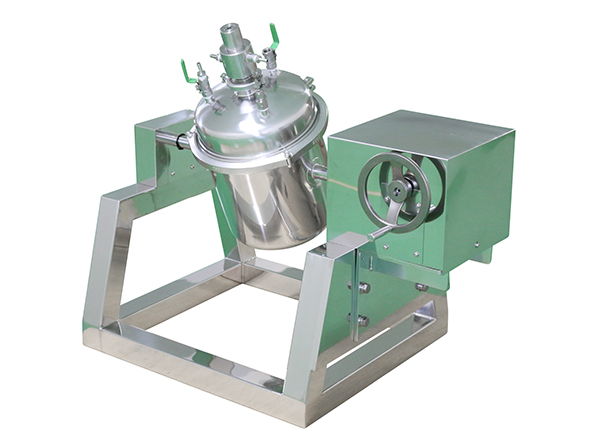
When we hear from our customers about troubles they are encountering in the installation or renewal of equipment, we often receive consultations about loss and yield improvements.
Our equipment, offered by Nitto Kinzoku Kogyo, can be customized from a single unit, so we propose changes such as adding or changing components, or altering the design, based on what we learn from your requirements.
While the proposals will vary depending on the working environment and the nature of the work, in this column, we will focus on the “input” and “output” stages, and introduce customizations that have actually been adopted, primarily aimed at loss and yield improvement.
Introducing by Causes of Loss
【1】Work flutters or scatters
【2】Spilling during input
【3】Cannot be completely discharged from the container (there is liquid remaining)
【1】Work flutters or scatters

How to countermeasure
Bring the work’s exit and receiving container as close as possible
(In case of powder work) Install a dust hood
Bring the work's exit and receiving container as close as possible
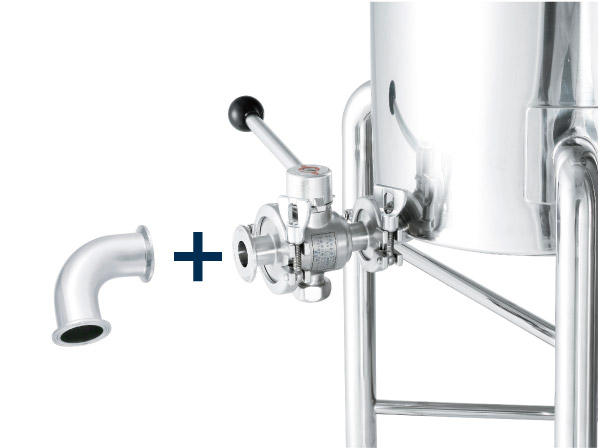
By extending the piping according to the receiving container’s position and size, scattering during discharge is suppressed.
You may only need to purchase additional piping parts.
Although simple, it is a cost-effective and easily adoptable solution.

▲ (Adopted by a material manufacturer)
The discharge outlet extending directly below the container has been extended sideways.
An inclination was added to prevent liquid from remaining in the extended piping section.

▲ (Adopted by a chemical manufacturer)
The outlet was made to fit the mouth of a ten-liter can to collect the work after completion of the process.
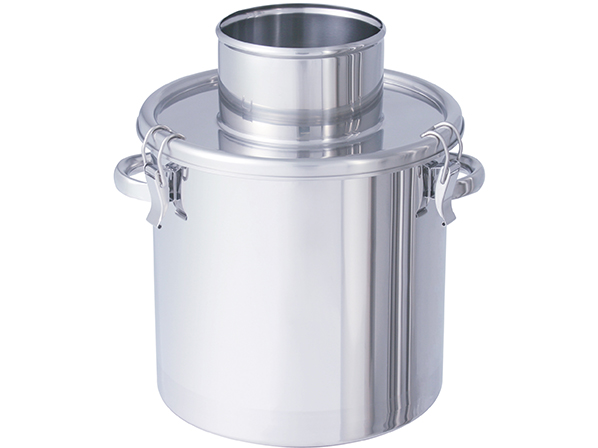
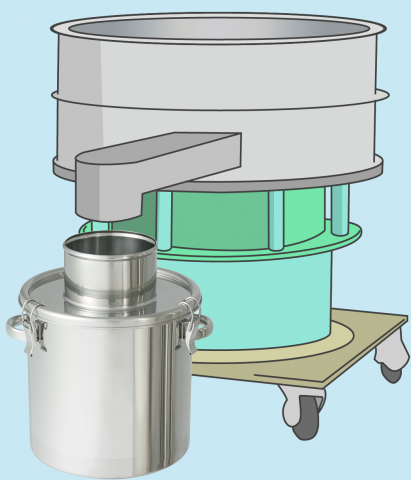
Connecting the receiving container with piping can also prevent scattering during discharge.
(If pressure is applied to the receiving container by input into a sealed container, there is a risk of dust leakage, so venting is provided.)
At Nitto Kinzoku Kogyo, we also offer receiving containers in our powder recovery container series, suitable for various types of piping.
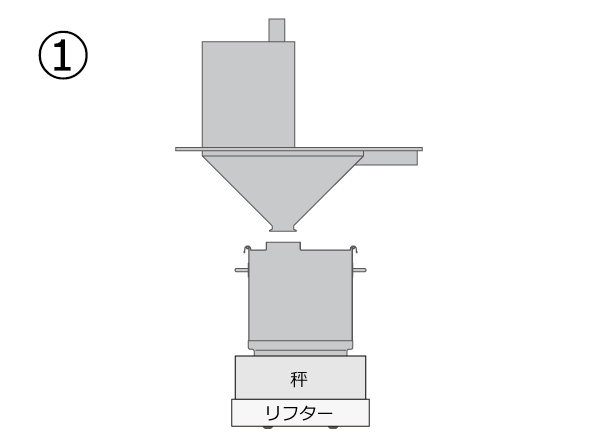
If the height of the receiving container is not constant or if you want to adjust the height depending on the process, we recommend placing the receiving container on a low-floor lifter for position adjustment.
There are also examples where we used a lifter with a weighing function, allowing the adjustment of input while checking the weight of the powder in the receiving container.
(In the case of powder work) Install a dust hood
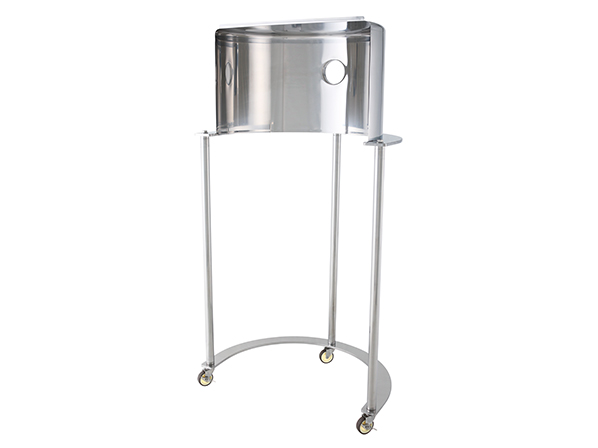

By attaching a cover over the container into which the material is input, and connecting it to a dust collector, you can recover the powder that flutters up.
The material collected by the dust collector can be reused, depending on the customer’s judgment.
【2】Spilling During Input
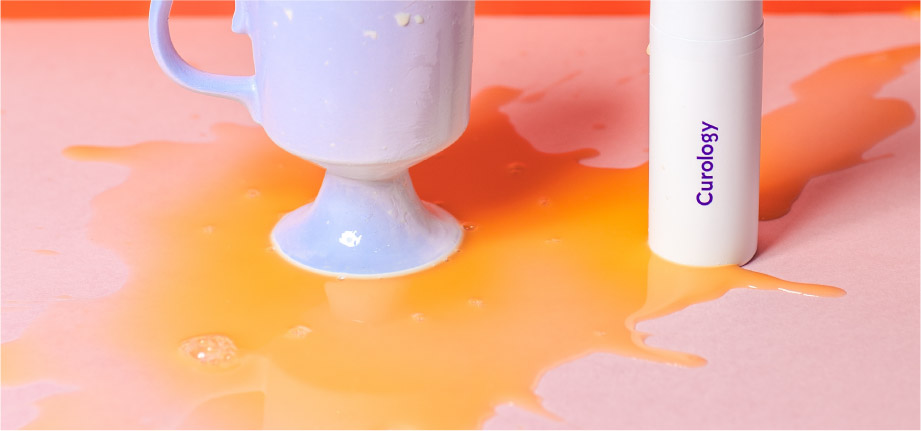
Provide an input hopper
Use a container with a pouring spout
Support the input operation
Install a step
Attach an Input Hopper
Provide an input hopper
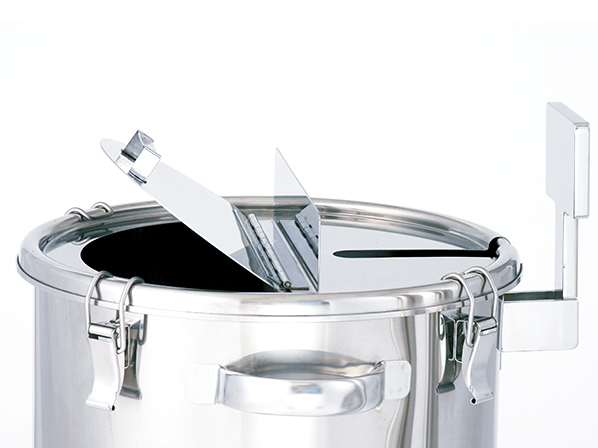
While it is common to use a partially openable lid as an input opening, there may be other equipment attached to the lid, preventing sufficient space from being secured.
Depending on the nature of the work handled and the factory environment, some customers may be concerned about foreign matter entering from a widely open mouth.
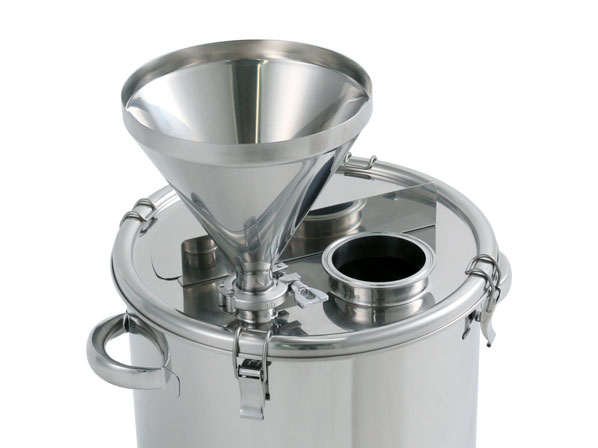
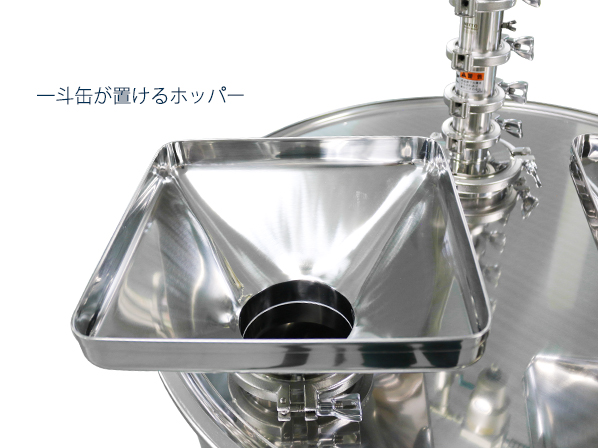
In such cases, a hopper is installed on the lid. You can secure sufficient space for input rather than providing a small input opening in the limited area of the lid.
The picture on the right shows an example where improvements for labor-saving have been added to the input hopper installed on the lid. The material in the ten-liter can is input from this hopper, and the shape has been made to allow the can to be placed upside down on the hopper.
Support the Input Operation
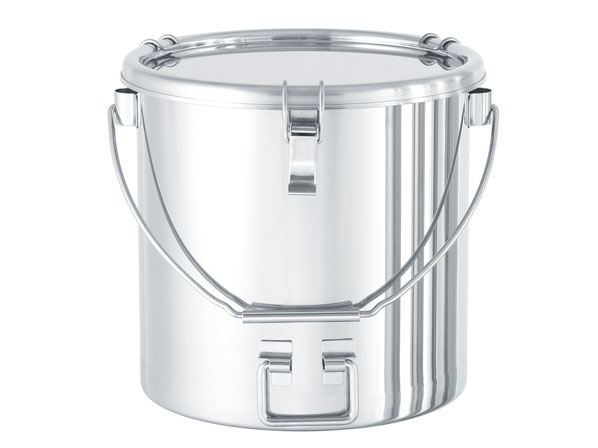

When handling a somewhat substantial amount of work, the materials handled may become numerous and heavy, and handling as desired may be challenging.
In processes where the container containing the material is tilted and transferred to the next process, a container that supports the tilting operation is recommended.
This ensures stable handling and supports precise input.
View the details of the product Alternatively, a balancer is also effective.
The operator will hardly feel the weight.
You only need to be concerned about the position and angle at which the container is tilted, enabling stable input.
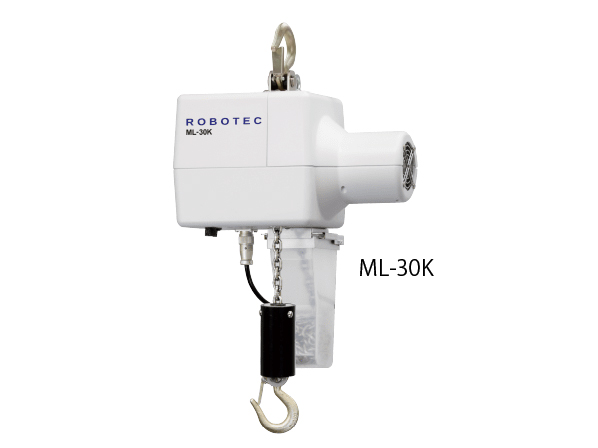
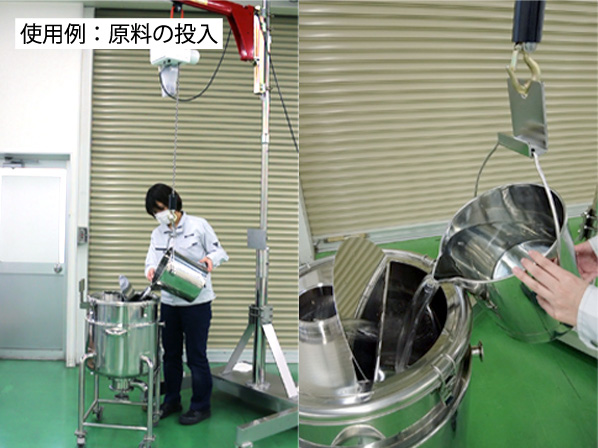
Alternatively, a balancer is also effective.
The operator will hardly feel the weight.
You only need to be concerned about the position and angle at which the container is tilted, enabling stable input.
Install a Step
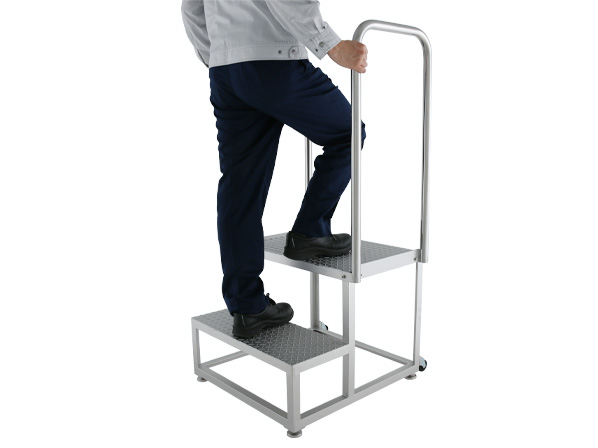
If the distance from the input opening is far, it might be a good idea to install a step (platform) to ensure precise input nearby.
You can input more reliably than in a strained posture, resulting in less loss, and above all, you can work safely.
【3】Inability to Fully Discharge from the Container (Remaining Liquid)
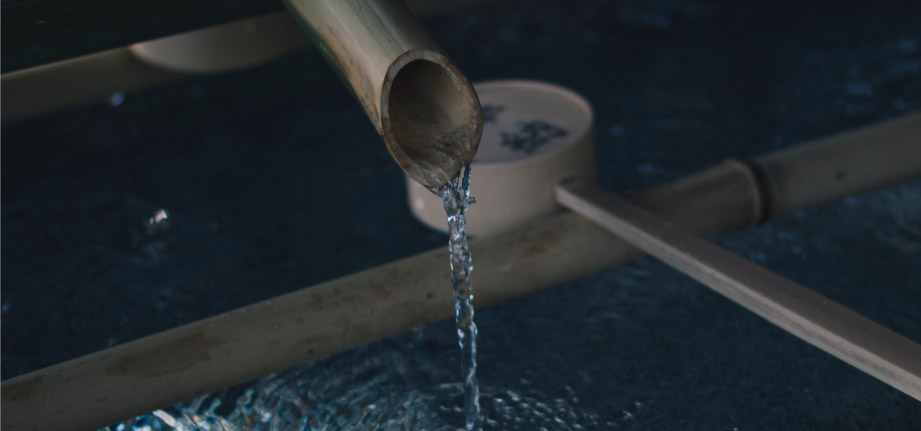
- Use a container with a sloped bottom
- Design the container to be invertible
- (For liquid work) Coat the inner surface of the container
- (For powder work) Widen the discharge outlet
- (For powder work) Install knockers or vibrators
Use a container with a sloped bottom
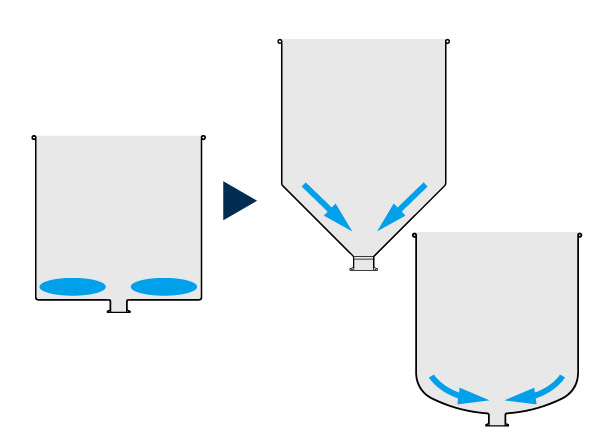
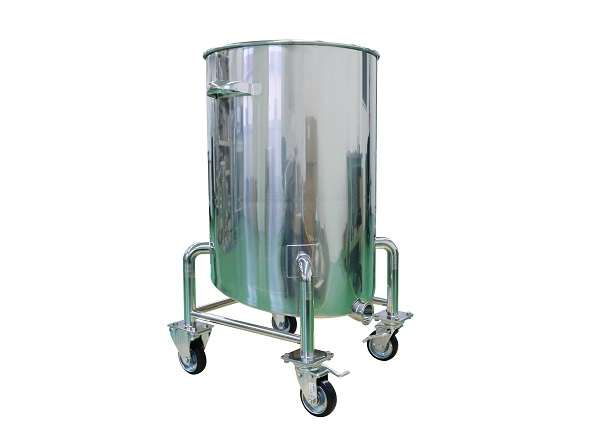
If a flat-bottomed container has a discharge outlet, residual contents at the bottom are inevitable.
Using a container with a slope towards the outlet allows the contents to discharge naturally due to gravity.
Design the container to be invertible

If you need to scoop out the contents, it is advisable to design the container to be invertible.
This eliminates the need to manually invert it and contributes to labor-saving.
(For liquid work) Coat the inner surface of the container
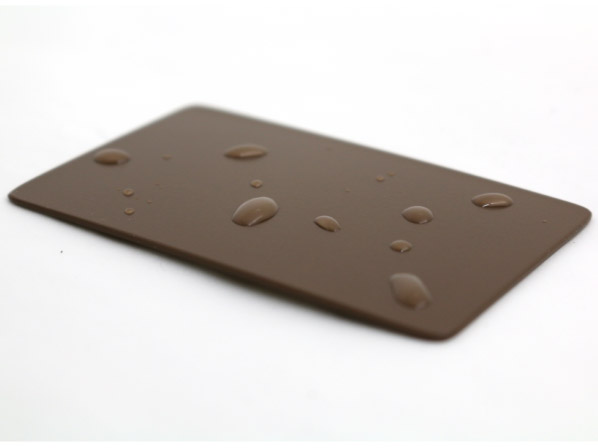
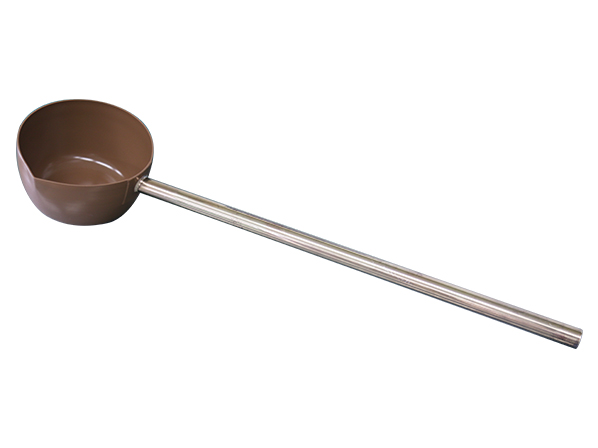
For highly adhesive liquids, residues may stick to the inner walls of the container, making it difficult to discharge completely.
Coating improves the water repellency of the surface and promotes smooth discharge.
The photo shows an example of a ladle used to scoop cosmetic ingredients.
(For powder work) Resolve hopper blockage
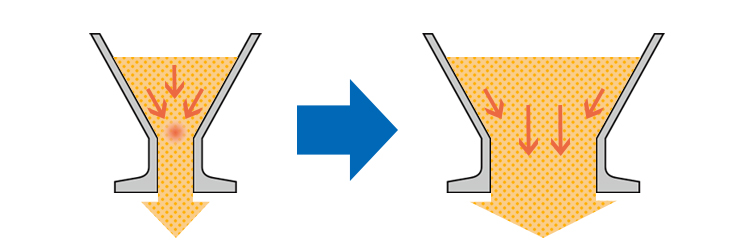
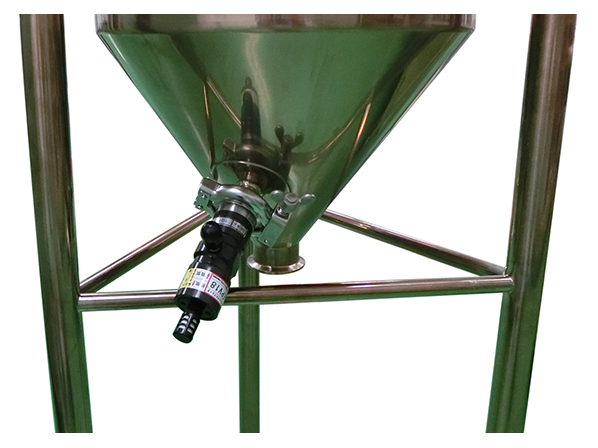
Powders may experience a “bridge” state where the exit becomes blocked due to the pressure applied during discharge.
This prevents complete discharge, and the remaining powder may be treated as a loss or risk mixing with the next batch.
Widening the outlet or installing devices like knockers or vibrators at the bottom of the hopper can resolve this blockage.
Alternatively, you can install knockers at the bottom of the hopper.
Feel free to contact us
In addition to the shape of the devices or containers, please consult us for any challenges like “Having trouble with ○○ in the container-using process.
We will provide suggestions based on over 120,000 case studies.
Tag Related Posts
- No related posts.
